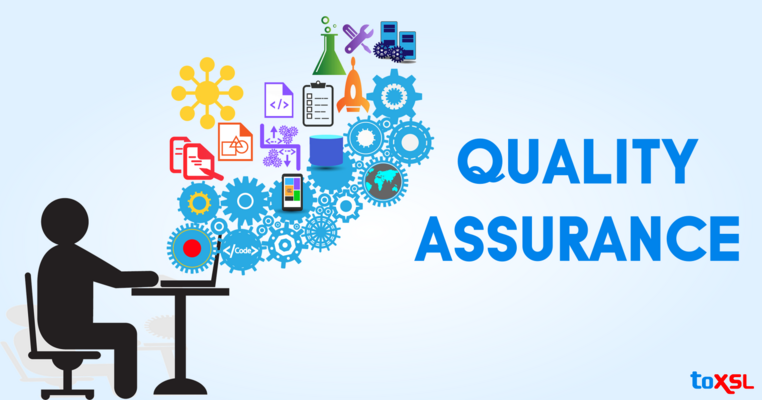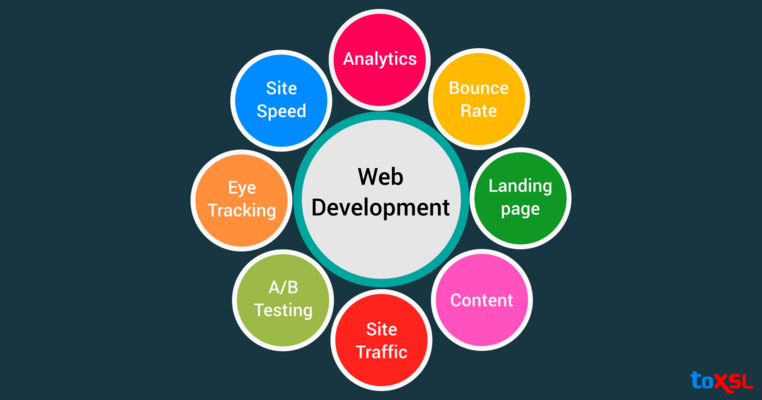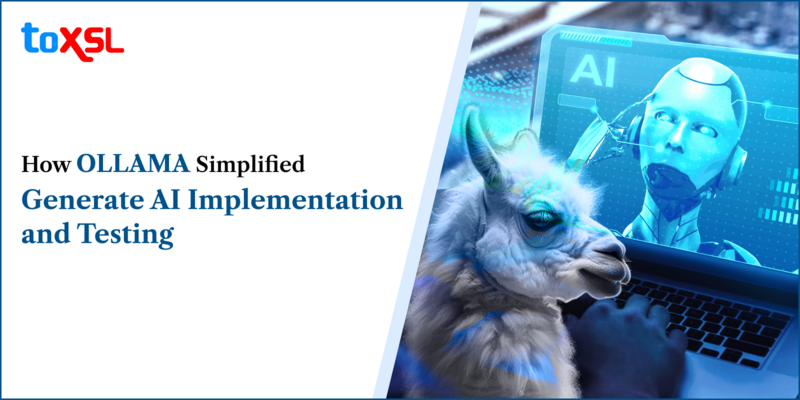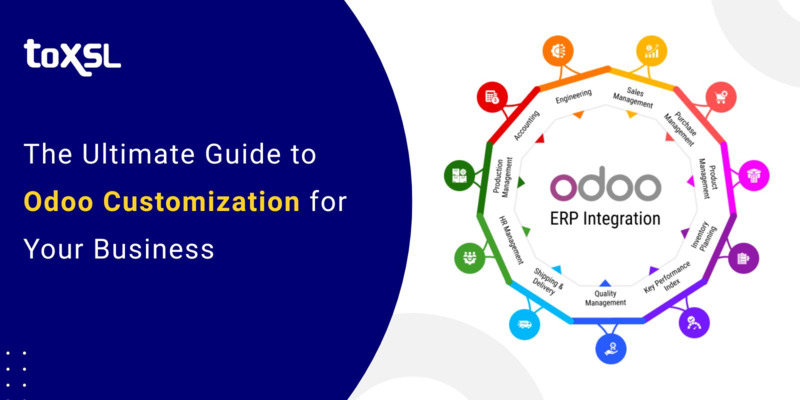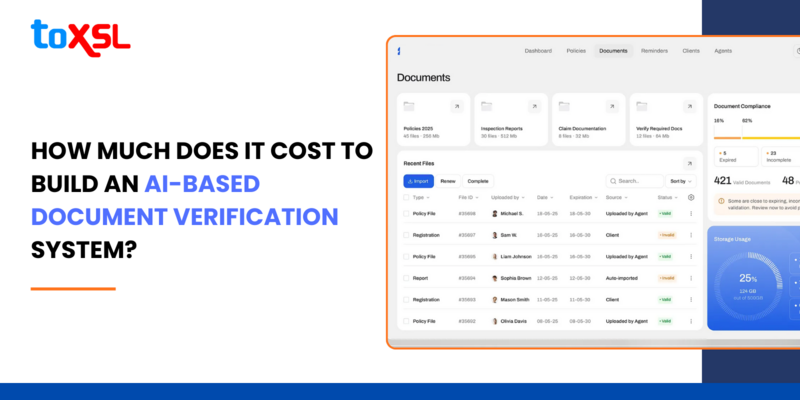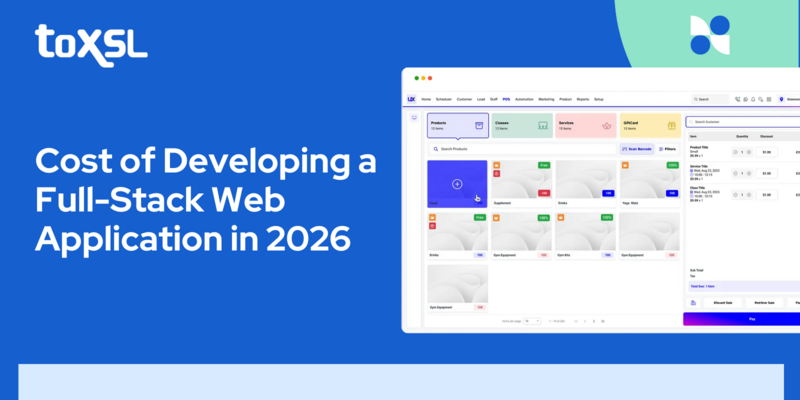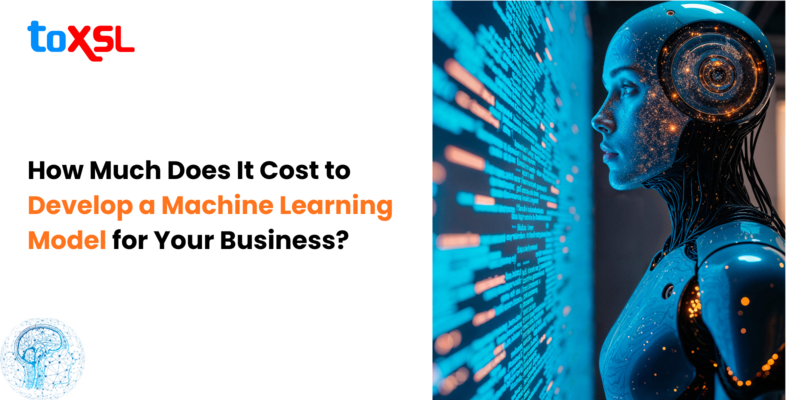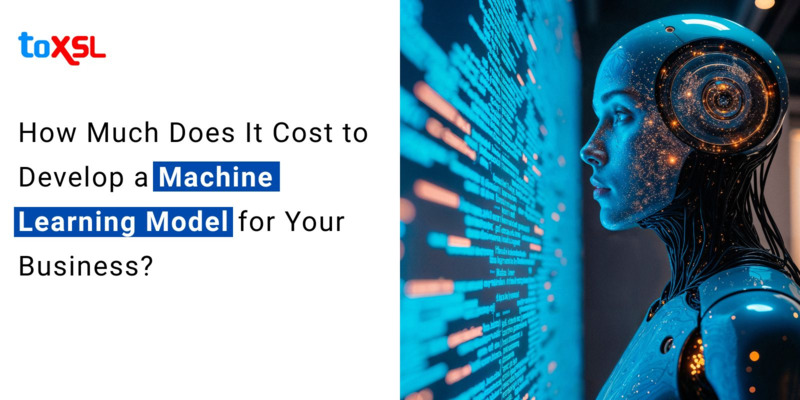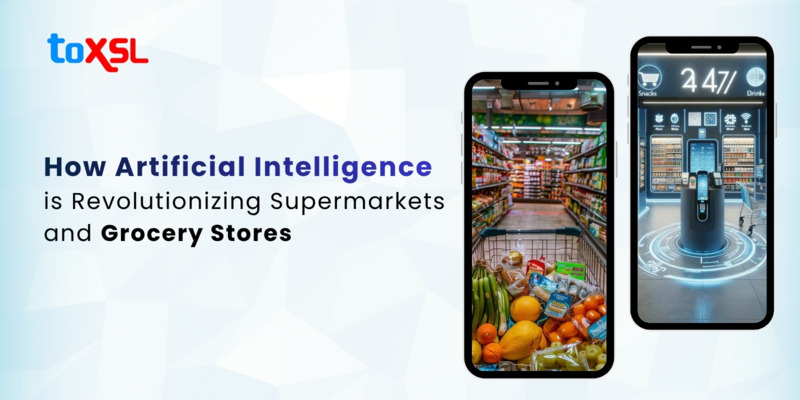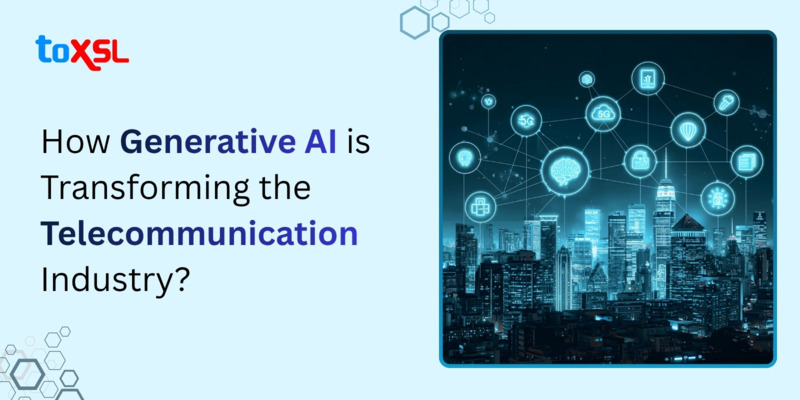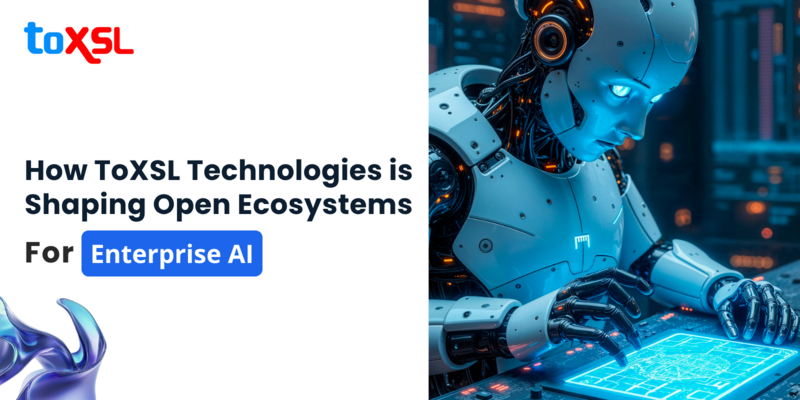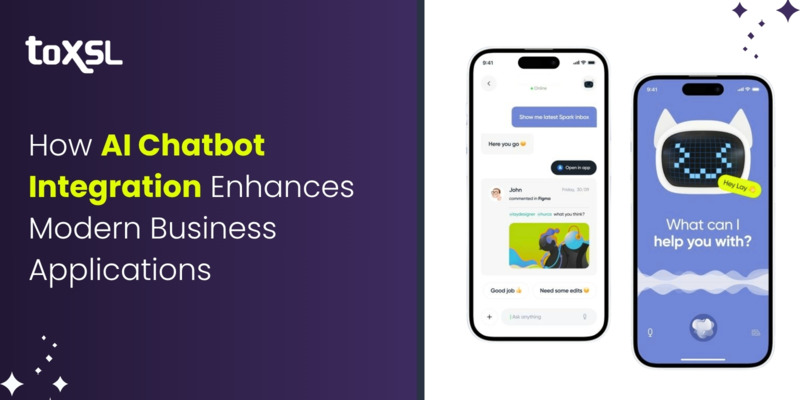- Sep 19, 2025
Share this post on:
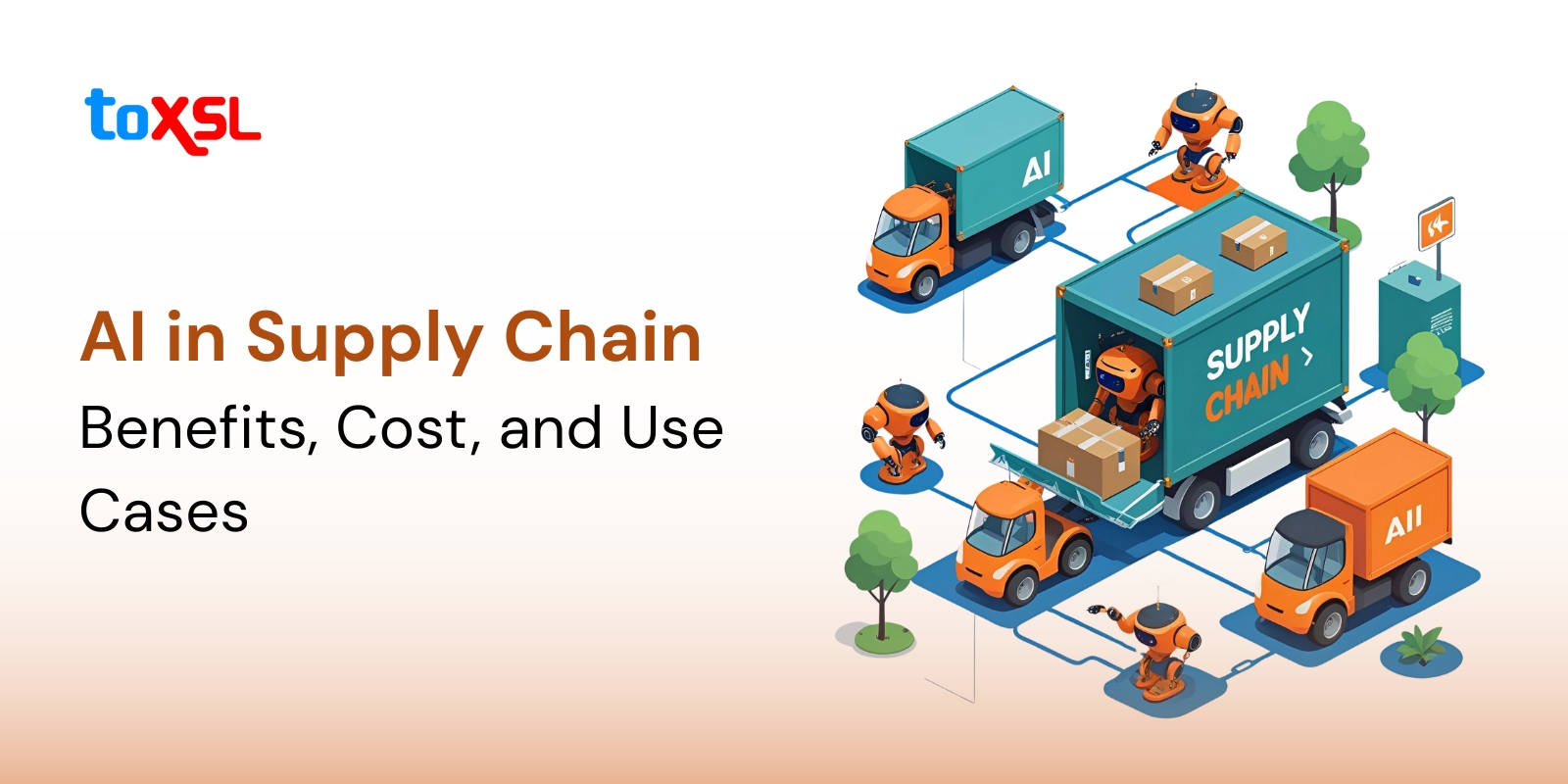
The global AI in supply chain market size is expected to be around $157.6 billion by 2033, growing at a CAGR of 42.7%. Artificial Intelligence (AI) is changing the supply chain industry by helping industry improve efficiency, accuracy, and cost-effectiveness. AI, when integrated in supply chain management, optimizes inventory levels, streamlines logistics, and improves demand forecasting.
According to Capgemini, 68% of supply chain businesses are using AI-based solutions to streamline their operations, enhancing transparency. Also, organizations that have opted for AI-based supply chain solutions have seen an 18% reduction in product defects.
Key Takeaway
- Global AI in supply chain market to reach $157.6B by 2033, growing at 42.7% CAGR
- 68% of businesses use AI to boost transparency and streamline operations
- AI improves efficiency, accuracy, cost savings, and resilience
- Businesses report 18% fewer product defects with AI-based solutions
- Integration costs range from $12,000–$50,000 with strong ROI
- AI enables sustainability, predictive planning, and logistics optimization
- The future of AI in supply chain is intelligent, autonomous, and adaptive
AI in Supply Chain
Businesses are opting for AI solutions in their supply chain to optimize their business and make their warehouse productive. Today, AI is transforming the entire supply chain processes by offering greater levels of visibility, automation, and predictive capabilities. This leads to more efficient operations, reduced costs, and keeps businesses ready and resilient in the face of disruptions.
Benefits of AI in Supply Chain
Manufacturers are constantly looking for and experimenting with AI solutions that can help them reshape supply chain operations, including improved efficiency, reduced errors, superior forecasting, and increased sustainability.
1. Improved Warehouse Efficiency: AI-powered robotics and automation automate warehouse tasks including picking, sorting, packing, and transportation. AI algorithms optimize route planning for robots and staff. This reduces travel time and helps businesses speed up order fulfillment. For example, Amazon Robotics uses such systems to enhance warehouse throughput. AI also helps in designing better warehouse layouts and making better placements to minimize inefficiencies. However, by continuously analyzing data, AI tools fine-tune workflows for maximum productivity.
2. Reduced Operating Costs: AI-driven solutions help businesses cut down on intensive tasks, reducing overtime and human errors. Real-time equipment monitoring system enables predictive maintenance and prevents costly breakdowns and downtime. Moreover, AI helps businesses optimize logistics routes and inventory management, reducing fuel consumption, storage costs, and waste.
3. Fewer Errors and Less Waste: AI enhances accuracy in inventory counts, picking, packing, and order fulfillment by leveraging real-time data and machine learning models. This leads to fewer mistakes, less product wastage, and minimized material losses along the supply chain.
4. Accurate Inventory Management: AI systems offer highly accurate, real-time inventory visibility, preventing both stock outs and overstock situations. By integrating data from various sources, AI forecasts inventory needs more precisely than traditional methods, helping businesses maintain optimal stock levels and reduce carrying costs.
5. Optimized Operations: From procurement to final delivery, AI-powered predictive analytics and process automation support agile decision-making. Businesses can allocate resources, optimize production schedules, and quickly adapt to supply-demand fluctuations to improve overall supply chain responsiveness. When paired with an automated procurement system, these capabilities become even more powerful, streamlining purchasing decisions and reducing delays throughout the supply chain.
6. Improved Employee Safety: AI-powered automation protects employees from repetitive and demanding warehouse tasks. Additionally, AI systems help businesses monitor workplace safety parameters, check for potential risks, and ensure safety standards to protect employees.
7. Timely Delivery: AI increases logistics and timely delivery by optimizing transportation routes based on real-time data, including traffic and weather. This lowers delays and improves the reliability of on-time deliveries, leading to higher customer satisfaction.
8. Improved Supply Chain Sustainability: AI’s ability to optimize routes and reduce waste lowers the impact of supply chain operations on the environment. Smart algorithms take into account fuel efficiency, traffic, and energy consumption, reducing emissions.
How Much Does it Cost to Integrate AI in Supply Chain?
The cost of AI integration in supply chains varies widely, depending on factors like the complexity of operations, scale of implementation, and type of technology adopted (robotics, predictive analytics software, IoT devices, cloud infrastructure).In general, the cost to integrate AI in Supply Chain ranges from $12,000 to $50,000. However, organizations get a strong return on investment (ROI) through cost savings. Also, businesses can see large efficiency gains and risk reduction within a few years of implementation. The key cost components include:
Technology: Cost can depend on the AI software licenses, robotics hardware, sensors, and computing infrastructure.
Customization and integration: Tailoring AI models to specific supply chain processes and integrating them with existing ERP, WMS, or TMS systems.
Data management: Data collection, cleaning, labeling, and storage can add to the cost of AI integration in supply chain.
Training and change management: Employee training and management of new workflows can increase the cost.
Maintenance and support: Businesses might have to pay for system updates, troubleshooting, and AI model retraining.
AI in Supply Chain: Use Cases
Today, AI solutions are simplifying supply chain automation. Here are a few must-know use cases:
Back-office Automation: AI helps supply chains by doing simple, repeated jobs like checking bills, managing orders, and typing in data. These jobs can take a lot of time. AI uses smart tools to look at lots of information quickly and make fewer mistakes.
Logistics Automation: In logistics, AI helps plan the best times for shipping, improves the last part of delivery to customers, and keeps track of packages in real time. It looks at lots of information to find the fastest routes, guess if there will be delays, and show a clear picture of the supply chain. This makes deliveries faster and cheaper. AI can also help predict future shipments, so companies can plan better.
Warehouse Automation: AI robots and machines can do tasks like picking, sorting, and packing in warehouses quickly and well. They can work all the time, so fewer people are needed. Smart technology also helps make the warehouse layout and work easier and faster. To further support this level of efficiency and coordination, many businesses combine AI with 3PL software to manage inventory, track shipments, and streamline communication with logistics partners. This helps the supply chain keep going even when there are not enough workers or when more products are needed.
Automated Quality Checks: Computer vision systems help machines “see” and check products in real time to find any faults or problems. They use smart technology to analyze images or video from cameras or sensors. This means less need for people to do manual checks and ensures the inspection is more accurate and consistent.
Automated Inventory Management: AI helps supply chains by keeping an eye on inventory all the time using smart sensors and computer programs. It studies past sales and customer needs to guess how much stuff will be needed. This helps managers reorder products automatically and keep the right amount of stock. It also warns about problems like running out of products or having too many. This way, businesses can save money and make sure products are always ready for customers.
Inventory Optimization: Machine learning helps businesses keep the right amount of inventory by predicting how much customers will want and adjusting stock based on market changes and business needs. AI can also run “what-if” tests to check different situations, suggest ways to manage risks, and recommend better inventory rules. This helps cut down on extra stock, saves money, and makes sure products are always available for customers.
Region-specific Forecasts: AI uses old information, what customers usually buy, and even local events to make very accurate predictions for specific areas. These predictions help supply chain planners adjust their plans for different regions and make sure deliveries match what's happening locally. This makes the supply chain tougher and better able to meet all sorts of customer needs, no matter where they are in the world.
Enhanced supplier relationship management: AI helps supply chain leaders keep track of how suppliers are performing by analyzing information like delivery history, product quality, and compliance. This helps spot any risks and make better decisions. AI can also handle regular updates automatically and alert the team if there’s a problem, making communication with suppliers easier and the whole process more efficient.
Conclusion
AI-based solutions have become a necessity for supply chain businesses. AI integration changed how businesses work and make decisions. As AI continues to evolve and mature, we can anticipate even more intelligent applications, pushing the boundaries of what a supply chain can achieve. The future of supply chains is intelligent, interconnected, and highly adaptive. So, if you are looking to integrate Artificial Intelligence in your supply chain, ToXSL Technologies is here to help. We are a leading Artificial Intelligence services provider company, helping businesses integrate AI into their supply chain and simplifying processes for them. Contact us today to learn more.
FAQs
1. How to integrate AI into the supply chain?
Integrate AI by identifying key areas like inventory, logistics, and forecasting. Collect and clean relevant data, choose AI tools tailored to your needs, run pilot programs, integrate with existing systems (ERP, WMS), train staff on new workflows, and continuously monitor and refine AI models.
2. How can AI enhance sustainability in supply chains?
AI improves sustainability by optimizing transport routes to reduce fuel consumption, minimizing waste through precise demand forecasting, monitoring environmental metrics in real time, and supporting circular supply chain practices like reverse logistics and asset recovery.
3. What is AI in supply chain management?
AI in supply chain management uses technologies like machine learning, computer vision, and automation to improve demand forecasting, optimize inventory, streamline warehouse operations, enhance supplier management, and predict risks for more efficient supply chains.
4. What role does generative AI play in supply chains?
Generative AI aids supply chains by simulating disruption scenarios, automating documentation and reporting, supporting strategic planning, and enabling intelligent workflow automation to improve decision-making and operational resilience.
5. How is AI used in logistics and supply chain operations?
AI optimizes logistics by improving route planning, predicting shipment delays, automating last-mile delivery tracking, enhancing warehouse automation, and providing real-time visibility to boost delivery speed and accuracy.
6. What is the difference between AI in supply chain and AI in logistics?
AI in supply chain covers the entire process from procurement to delivery, including inventory and supplier management. AI in logistics focuses specifically on transportation, warehousing, route optimization, and shipment tracking within the broader supply chain.
7. What is the future of AI in supply chain?
The future of AI in supply chain involves fully autonomous, adaptive systems capable of self-managing operations, hyper-personalized deliveries, real-time risk mitigation, and leveraging generative AI for enhanced strategic decision-making and scenario planning.



